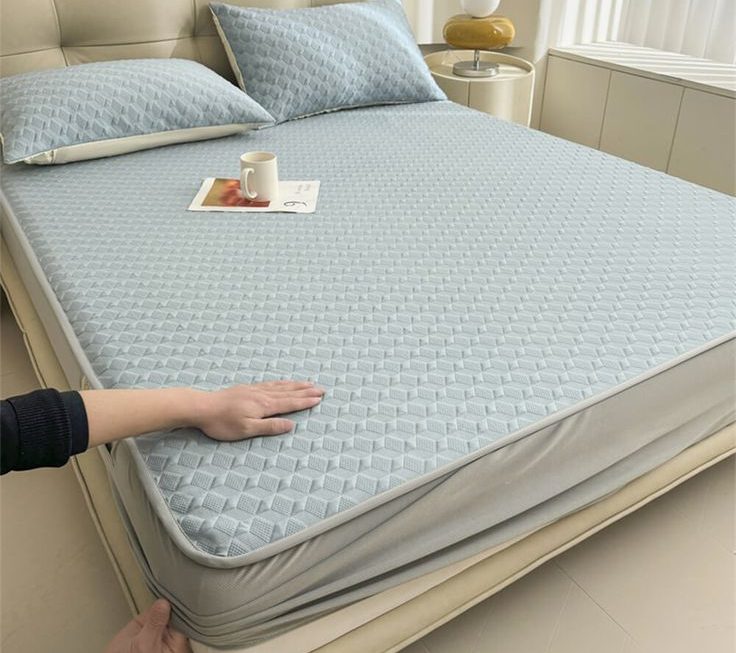 Introduction:
Introduction:
Carpet is a popular and comfortable flooring option in homes and offices. However, it can get damaged over time due to wear and tear, stains, or accidental burns or tears. Repairing carpet can help restore its appearance and extend its lifespan. In this guide, we will explore different methods and techniques for repairing common carpet damages. By following these simple steps, you can save money and maintain the beauty of your carpet.
Here are some common materials used in carpets:
Nylon:
Nylon is one of the most popular carpet materials due to its durability, resilience, and stain resistance. It is strong, easy to clean, and available in a wide range of colors and styles.
Polyester:
Polyester carpets are known for their softness and luxurious feel. They are resistant to fading, staining, and water-based stains. Polyester carpets are also available in various colors and patterns.
Wool:
Wool is a natural fiber that offers warmth, softness, and durability. It is known for its natural resistance to stains, soil, and fire. Wool carpets tend to be more expensive than synthetic options but are highly sought after for their natural and sustainable properties.
Polypropylene (Olefin):
Polypropylene is a synthetic fiber that is resistant to staining, fading, and moisture.
Triexta:
Triexta is a newer carpet fiber that combines the durability of nylon with the stain resistance of polyester. It is known for its softness, resilience, and resistance to fading and staining. Triexta carpets are a popular choice for households with children or pets.
Natural fibers:
Carpets can also be made from natural fibers such as sisal, jute, seagrass, and coir. These materials offer a unique texture and earthy aesthetic, but they may require more maintenance and are not as resistant to staining as synthetic options.
These are just a few examples of carpet materials commonly used. Each material has its own characteristics and benefits, so it’s important to consider factors such as durability, stain resistance, comfort, and budget when choosing a carpet material that best suits your needs and preferences.
Here are some types of carpets:
Cut pile:
This is one of the most common types of carpet. It has a soft and plush texture, and the fibers are cut evenly across the surface. Cut pile carpets are available in various styles such as plush, saxony, and frieze.
Loop pile:
Loop pile carpets have loops of yarn that are evenly distributed across the surface. They are known for their durability and resistance to wear and tear. Loop pile carpets can have a level loop or a textured loop, providing different visual patterns.
Berber:
Berber carpets are popular in high-traffic areas.
Shag:
Shag carpets have long, loose fibers that create a luxurious and soft feel underfoot. They give a retro and cozy look to a space. Shag carpets require regular maintenance to keep the fibers clean and prevent tangling.
Cut and loop pile:
This type of carpet combines both cut and looped fibers to create patterns and textures. The contrasting heights of the fibers create a visually interesting surface. Cut and loop pile carpets are popular in contemporary and modern interior designs.
These are just a few examples of the different types of carpets available. When choosing a carpet, consider factors such as durability, texture, color, and maintenance requirements that best suit your needs and design preferences.
 Assessing the Damage
Assessing the Damage
How to repair carpet
Before starting the repair process, it’s important to assess the extent of the damage to determine the appropriate repair method.
A. Identify the Damage: Look for stains, burns, tears, or loose seams in the carpet that need repair.
B. Measuring the Damage: Measure the size of the damaged area to determine the amount of material or replacement needed.
Repairing Punctures and Burns
A. Cutting Out the Damaged Area: Use a utility knife to carefully cut out the damaged portion of the carpet, making sure to follow the shape and pattern of the carpet.
B. Patching the Area: Cut a replacement patch from a spare piece of carpet or a hidden area of the carpet, ensuring it matches the size and pattern of the removed section. Attach the patch to the damaged area using carpet adhesive.
 Restoring Loose Seams
Restoring Loose Seams
Loose seams can occur due to heavy foot traffic or pulling.
A. Inspecting the Seams: Examine the seams to identify any loose areas or separations.
B. Reattaching the Seams: Apply carpet adhesive underneath the loose seam, press it down firmly, and use a seam roller to ensure a secure bond.
Treating Stains and Spots
A. Blotting the Stain: For liquid stains, blot the area immediately using a clean cloth or paper towel to absorb any excess liquid.
B. Stain Removal Solutions: Use a commercial carpet stain remover or a homemade solution like a mixture of mild detergent and water to scrub the stain gently. Rinse thoroughly and blot dry.
Fixing Snags and Pulls
A. Inspecting the Snag: Examine the snagged area and gently pull the loose fibers back into place.
B. Trimming the Snag: If the snag is more severe, carefully trim the loose fibers with scissors to avoid further damage.
Hiring Professional Help
How to repair carpet
In some cases, carpet repairs may require professional assistance.
A. Complex or Extensive Damage: If the damage is beyond your expertise or the repair is complex, it is advisable to seek the help of a professional carpet repair service.
B. Carpet Stretching: If your carpet has become loose or wrinkled, hiring a professional carpet restretching service can help eliminate wrinkles and extend the life of your carpet.
 Here are some cleaning precautions for carpets:
Here are some cleaning precautions for carpets:
Vacuum regularly:
Regular vacuuming helps to remove dirt, dust, and debris from the carpet fibers. Aim to vacuum at least once a week, or more frequently in high-traffic areas. Use a vacuum cleaner with a rotating brush or beater bar to effectively lift dirt from the carpet.
Treat stains promptly:
If you come across a stain on your carpet, it’s important to treat it as soon as possible. Blot the stain gently with a clean cloth or paper towel to absorb as much liquid as possible. Avoid rubbing the stain, as it may spread and embed it deeper into the carpet. Use a carpet stain remover or a mixture of mild detergent and water to spot clean the affected area, following the product’s instructions.
Deep cleaning:
You can hire professional carpet cleaners or use a carpet cleaning machine with the appropriate cleaning solution. Follow the manufacturer’s instructions for deep cleaning the carpet, as different types of carpets may have specific requirements.
Test cleaning products:
Before using any cleaning product on the carpet, it’s essential to test it in an inconspicuous area first to ensure it doesn’t cause any damage or discoloration. Apply the product to a small, hidden area of the carpet and check for any adverse reactions.
Dry thoroughly:
Excess moisture can lead to mold and mildew growth. Open windows and turn on fans or dehumidifiers to aid in the drying process.
Professional cleaning:
To maintain the longevity and appearance of your carpet, consider scheduling professional carpet cleaning every 12 to 18 months. Professional cleaners have the expertise and specialized equipment to effectively deep clean carpets and remove stubborn stains.
Remember to consult the manufacturer’s guidelines for specific care instructions for your carpet type. Regular cleaning and maintenance will help extend the life of your carpet and keep it looking fresh and clean.
 Conclusion
Conclusion
How to repair carpet?
Repairing carpet is a cost-effective way to restore its appearance and maintain its lifespan. By assessing the damage and using appropriate repair techniques, such as patching, restoring loose seams, treating stains, and fixing snags, you can keep your carpet looking fresh and beautiful. Remember to always follow safety precautions and test any cleaning agents on a small, inconspicuous area before treating larger stains. If the damage is extensive or complex, it’s best to consult a professional for assistance. With proper care and maintenance, your repaired carpet will continue to provide comfort and style for years to come.



